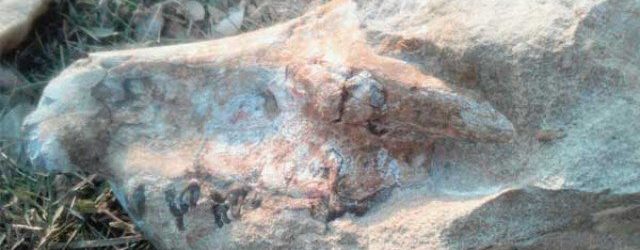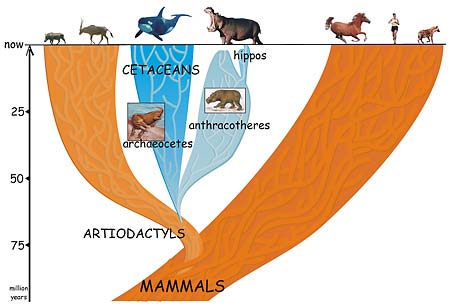
A 3.3 million year old fossil of extinct anthracothere, a plant eating semi-aquatic mammal has recently been discovered in district Jhelum in the Punjab province of Pakistan, reported an international science journal. These four footed mammals that are believed to have inhabited the planet for nearly 40 million years have only one living descendant, the hippopotamus. While it is unclear whether the earliest ancestors of anthracotheres were fully aquatic, most recent fossils indicate that they might have adapted to an aquatic or semi aquatic life.
The fossil being attributed to the extinct anthracothere family was excavated by Ghayyur Abbas, Chaudhry Abid Hussain and Mehtab Khan of the Punjab University. The foot long vestiges weighed up to 10 kilograms.
Scientists have long deliberated upon the origin of hippopotamus until recently, Fabrice Lihoreau, a palaeontologist at France’s University of Montpellier published a study revealing that hippos evolved from a group of semi-aquatic mammals with even-toed hooves called anthracotheres.

Previously fossilized remains of some of the world’s largest land dwelling mammals have been discovered in the Baluchistan province of Pakistan. For example between 2000 and 2003, in a major discovery a team of palaeontologists from University of Montpellier, France excavated the largest herbivorous land mammal in the world, later named Baluchitherium. The Baluchitherium which translates to the beast of Baluchistan weighed around 20 tons and measured up to 18 feet. It is believed to be a hornless ancestor of the present day rhinoceros.
A BBC news reported: “Baluchitherium is an extinct rhinoceros that lived during the Tertiary Period about 20 to 30 million years ago. With its long neck and legs, it was thought to feed high up in the trees. However, unlike the modern rhinoceros, the animal had no horn”. Its fossils were later preserved and put on display at the Geological Survey of Pakistan museum in Quetta.
Similarly in 2016, a group of researchers at the University of Punjab discovered 3 million years old fossilized tusks of the pre-historic elephant, near the district Jhelum in Pakistan’s Punjab province. These fossils of the Anancus – an ancestor of the elephant were eight feet long and eight inches in diameter. They were excavated from Siwalics rocks dated to be millions of years old.
Pre historic animal fossils have frequently been unearthed in various regions of Pakistan. The fossil remains of a 14 million years old Deinotherium also known as the “Terrible beast” were discovered at an excavation site near Chakwal.
Sources:
https://tribune.com.pk/story/1598074/1-33-million-year-old-fossil-extinct-anthracothere-found-pakistan/
https://tribune.com.pk/story/1052079/tusks-found-near-jhelum-are-three-million-year-old-claims-professor/
https://tribune.com.pk/story/959830/archaeological-find-pre-historic-elephant-skull-discovered-near-gujrat/
http://www.berkeley.edu/news/media/releases/2005/01/24_hippos.shtml
https://tribune.com.pk/story/68677/14m-year-old-fossils-of-terrible-beast/
https://www.dawn.com/news/592377